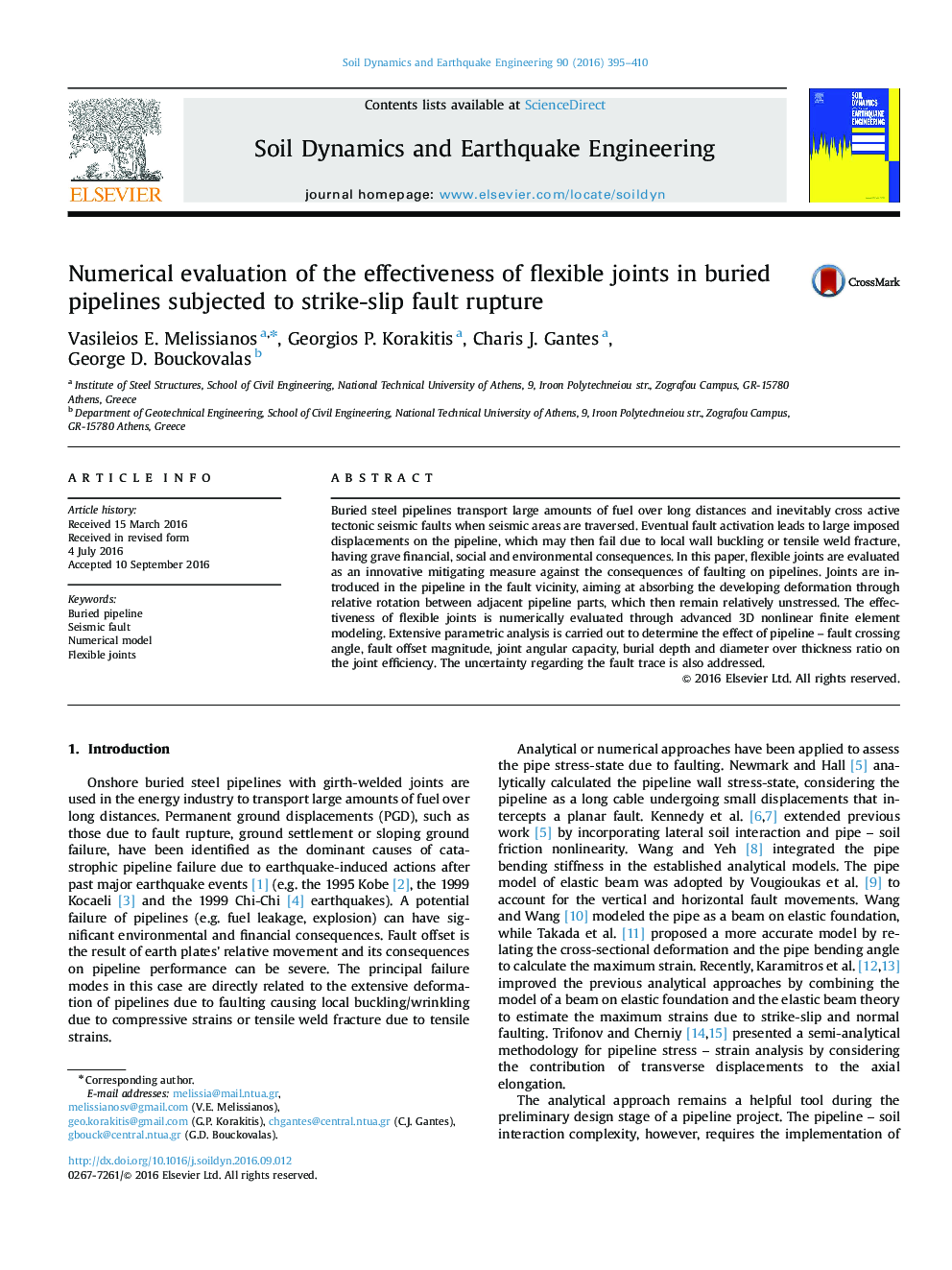| Article ID | Journal | Published Year | Pages | File Type |
|---|---|---|---|---|
| 4927258 | Soil Dynamics and Earthquake Engineering | 2016 | 16 Pages |
Abstract
Buried steel pipelines transport large amounts of fuel over long distances and inevitably cross active tectonic seismic faults when seismic areas are traversed. Eventual fault activation leads to large imposed displacements on the pipeline, which may then fail due to local wall buckling or tensile weld fracture, having grave financial, social and environmental consequences. In this paper, flexible joints are evaluated as an innovative mitigating measure against the consequences of faulting on pipelines. Joints are introduced in the pipeline in the fault vicinity, aiming at absorbing the developing deformation through relative rotation between adjacent pipeline parts, which then remain relatively unstressed. The effectiveness of flexible joints is numerically evaluated through advanced 3D nonlinear finite element modeling. Extensive parametric analysis is carried out to determine the effect of pipeline - fault crossing angle, fault offset magnitude, joint angular capacity, burial depth and diameter over thickness ratio on the joint efficiency. The uncertainty regarding the fault trace is also addressed.
Related Topics
Physical Sciences and Engineering
Earth and Planetary Sciences
Geotechnical Engineering and Engineering Geology
Authors
Vasileios E. Melissianos, Georgios P. Korakitis, Charis J. Gantes, George D. Bouckovalas,
